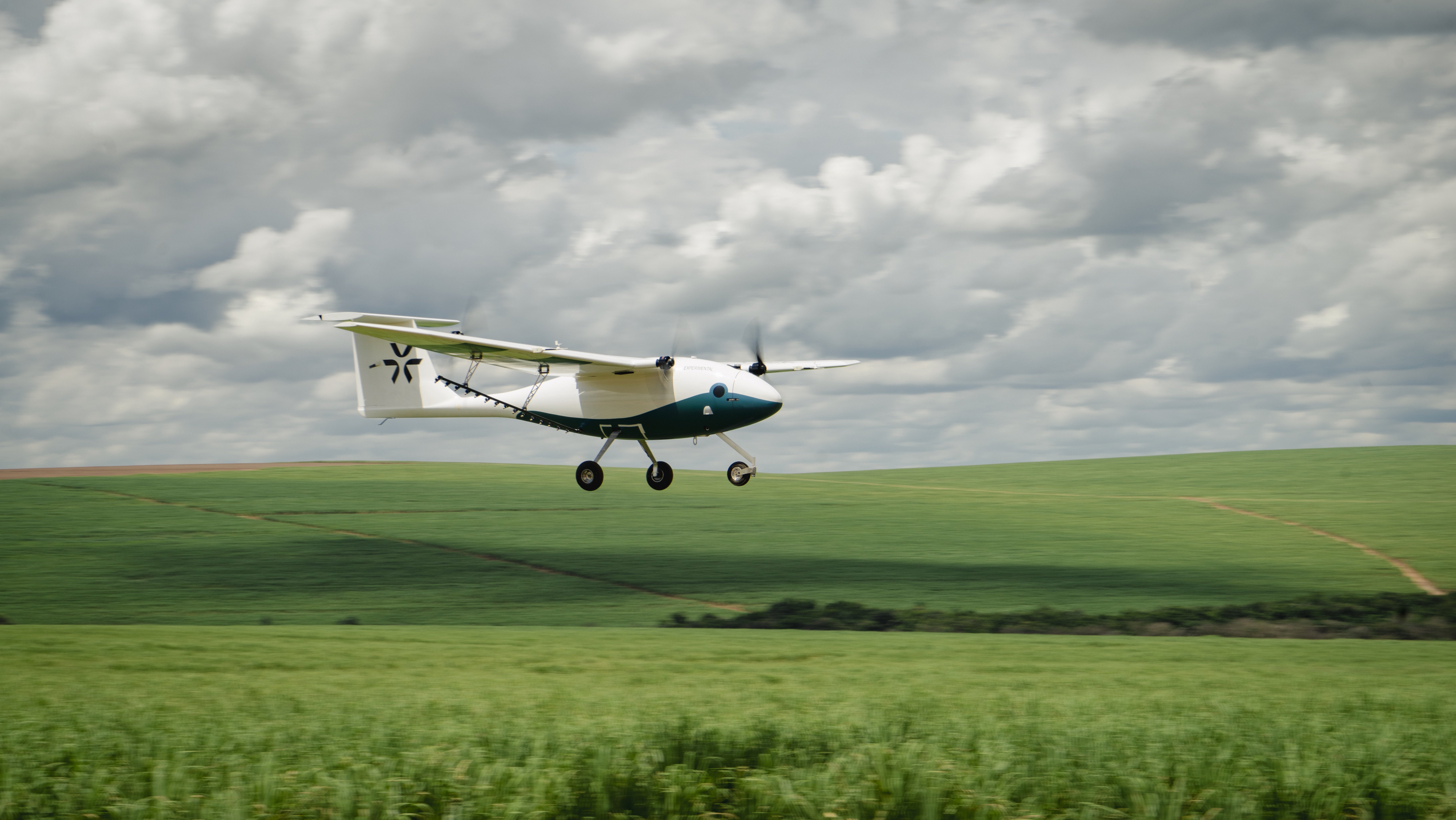Click Here to View This Page on Production Frontend
Click Here to Export Node Content
Click Here to View Printer-Friendly Version (Raw Backend)
Note: front-end display has links to styled print versions.
Content Node ID: 419522
A just-closed $37 million Series A funding round will support efforts by California-based Pyka to start serial production of its new Pelican autonomous crop-spraying aircraft. The company says it is also stepping up the development of a cargo-carrying variant that would be able to carry a 400-pound payload on sectors of up to around 200 miles.
According to Pyka, it has already delivered three of the all-electric Pelicans to fruit producers in Latin America, and these are being operated under experimental approvals from local regulators. In an April 29 announcement, the company said that it will deliver another aircraft to an undisclosed new customer in May.
Announcing the Series A funding round, Pyka said it holds memorandums of understanding covering potential sales valued at $320 million. The lead investors supporting the round included Piva Capital and Prelude Ventures.
Meanwhile, Pyka is working with the FAA to secure a 44807 exemption to allow commercial use of the Pelicans to begin in the U.S. According to the company, the agency is in the final stages of drafting this exemption.
The new Pelican builds on Pyka’s earlier Egret crop sprayer, which achieved type certification in New Zealand and was briefly used by several customers there as part of the company’s research and development program. The Pelican’s forward fuselage is the same as that of its predecessor, but with a much larger tail and three electric motors and propellers with a combined power output of 75 kW, plus batteries for redundancy.
With a flight endurance of 30 minutes (plus a 10-minute reserve), it has an increased payload for crop-spraying purposes of 700 pounds/84 gallons. Depending on the required spray rate, the Pelican can treat between 84 and 130 acres per hour. Pyka says the aircraft can be operated at one-fifth of the operating costs of an equivalent piloted model.
Outside the Americas, the company sees strong demand for aerial-crop spraying in Asia. It can operate from landing strips as short as 450 feet, with a takeoff roll of just 300 feet.
Pyka co-founder Michael Norcia told FutureFlight that the Pelican’s initial clients in Latin America are operating the aircraft at a spray rate that is around 20 percent lower than the target rate. “The remaining 20 percent will be unlocked shortly through improved ground support infrastructure and the larger payload of recent serial numbers,” he explained.
Customers’ pilots receive training in operating the autonomous aircraft, which uses a Lidar-enabled collision-avoidance and terrain-following system. Pyka says the operational handover process takes around three to four weeks.
“Pyka’s strategy is to rapidly move towards profitability in order to support our long-term growth potential,” said chief commercial officer Volker Fabian. “We achieved our first commercial approval within two and a half years of operation. Now we have multiple active customers around the world with another dozen or so launch customers in the pipeline across both the ag and cargo segments. This funding allows us to actively pursue that work and further accelerate business growth.”
Pyka says its proprietary technology includes autonomous flight-control software, flight computer, high-energy density batteries, high-power-density motor controllers, and a fiber composite airframe.
